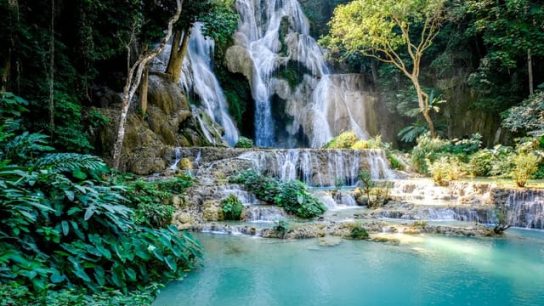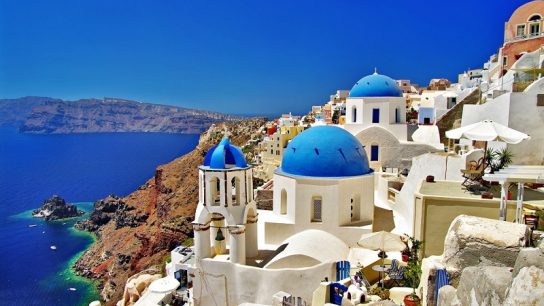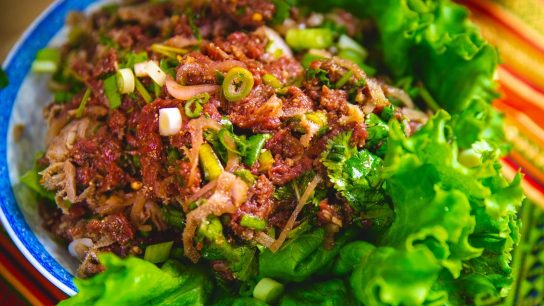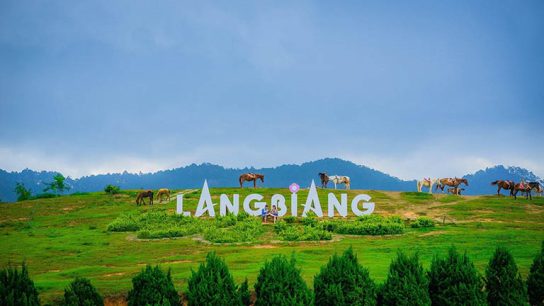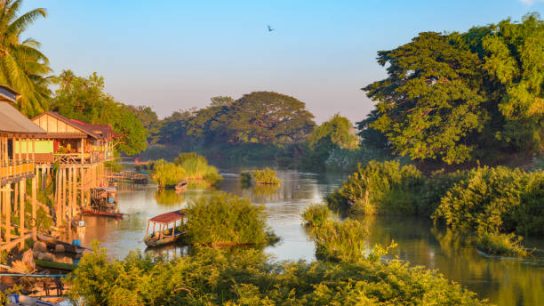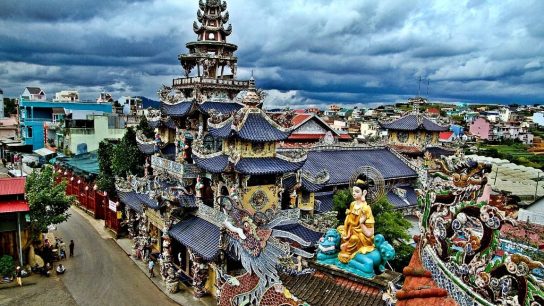The Long Bien Bridge, an iconic symbol of culture and history in Hanoi, stands proudly across the Red River, witnessing over a century of the city’s remarkable past. More than just a structural marvel, it holds a significant place in the hearts of Hanoians and serves as a familiar destination in the bustling center of the city. Let’s delve into the details of this renowned bridge through this article.
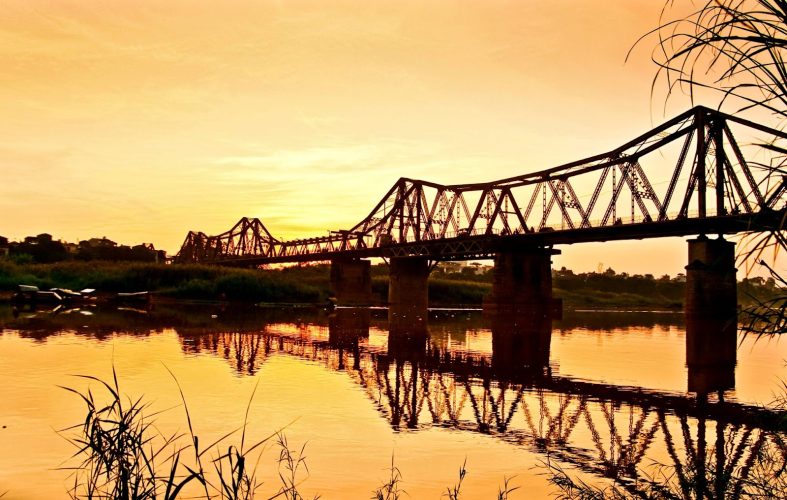
Overview of Long Bien Bridge
Location of Long Bien Bridge
Situated in the Long Bien district, this steel bridge is the first to span the Red River in Hanoi, connecting the Long Bien and Hoan Kiem districts. Constructed by the French from 1898 to 1902, originally named Doumer Bridge, it was later renamed Long Bien after the liberation of Hanoi. Today, this bridge is a popular tourist spot for both international travelers exploring Hanoi’s Old Quarter and local youth seeking picturesque locations for social media check-ins.
Architectural Features of Long Bien Bridge

The bridge consists of 19 steel spans supported by 20 imposing piers, spanning a total length of 2,290 meters. Additionally, it boasts a 896-meter stone-paved path leading to the western end of the bridge. Upon completion, Long Bien Bridge was the second-longest bridge globally, following the Brooklyn Bridge in the United States.
With a width of 4.75 meters, it accommodates two lanes for vehicles and pedestrians on each side, while the central lane serves as a single-track railway. The design seamlessly incorporates European advancements in steel structure construction and artistic elements, portraying a sense of strength and endurance over the centuries.
The architectural elegance of Long Bien Bridge is often likened to a dragon’s spine, a ribbon crossing the Red River, or even a horizontal Eiffel Tower within Hanoi’s landscape.
Historical Significance of Long Bien Bridge
Long Bien Bridge has been a witness to crucial historical milestones during Vietnam’s resistance against foreign powers. It played a vital role in both the anti-French resistance and the subsequent anti-American resistance.
- On September 2, 1945, as President Ho Chi Minh proclaimed Vietnam’s independence at Ba Dinh Square, Long Bien Bridge became a conduit for thousands of suburban residents, jubilantly making their way to join the celebration.
- In October 1954, the bridge bore witness to the sea of flags and flowers celebrating the liberation of Hanoi.
- Over the following 21 years, it once again witnessed the comprehensive liberation and unification of the nation, marking significant chapters in Vietnam’s history. Long Bien Bridge has become more than an inanimate structure; it is a companion, standing tall alongside the people and the nation through trials and triumphs over the past century.
Best Times to Long Bien Bridge
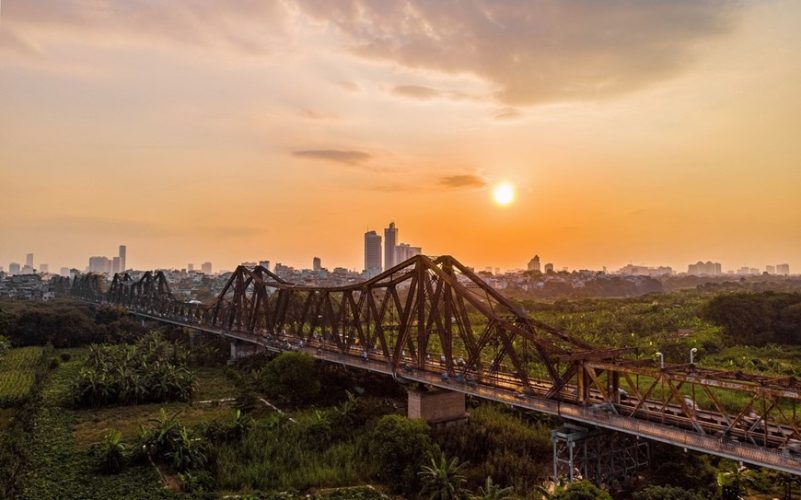
Late Afternoon (3 PM – 5 PM):
The period between 3 PM and 5 PM is an ideal time to immerse yourself in the beauty of Long Bien Bridge. As the afternoon progresses, the sunlight creates a warm and enchanting atmosphere, casting a golden glow over the bridge and the surrounding landscape. This time frame provides excellent lighting conditions for photography, allowing you to capture stunning images of the bridge against the backdrop of the Hanoi skyline.
On Foot or Bicycle:
To fully appreciate the historical significance and architectural grandeur of Long Bien Bridge, consider visiting during the late afternoon and exploring the bridge on foot or bicycle. This allows you to move at a leisurely pace, taking in the intricate details of the structure and enjoying the panoramic views of the Red River. Walking or cycling also provides a more intimate connection with the bridge and its surroundings.
Avoid Peak Hours:
It’s advisable to avoid visiting Long Bien Bridge during peak hours, especially in the morning and evening when commuter traffic is high. The bridge is narrow, and during rush hours, it can become crowded with pedestrians, cyclists, and motorized vehicles. Choosing less congested times ensures a more relaxed and enjoyable experience as you explore the bridge and its historical significance.
Check Sunset Timing:
One of the highlights of visiting Long Bien Bridge is witnessing the sunset over the Red River. Check the local sunset timing and plan your visit accordingly. As the sun sets, the bridge takes on a captivating silhouette, creating a picturesque scene.
Recommended Itinerary for Bridge Exploration
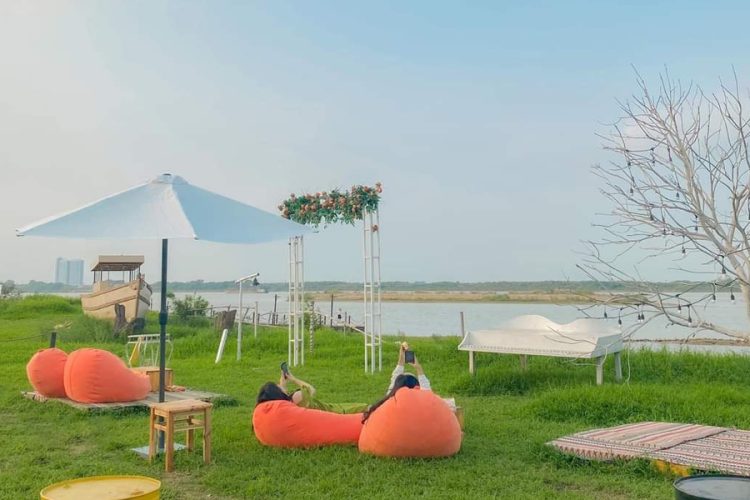
To make the most of your visit to Long Bien Bridge, consider the following suggested itinerary:
- Late Afternoon Arrival (3 PM): Begin your exploration in the late afternoon when the lighting is optimal for photography. Capture the intricate details of the bridge and enjoy the warm ambiance as the sun sets.
- Walking Exploration: Explore the bridge on foot, taking time to appreciate its historical significance. Walk along the pedestrian paths, observe the architectural features, and absorb the cultural heritage embedded in Long Bien Bridge
- Sunset Viewing (5 PM): Position yourself to witness the breathtaking sunset over the Red River. Capture the changing colors of the sky and the silhouette of the bridge during this magical hour.
- Visit Tran Nhat Duat Street: Head to Tran Nhat Duat Street, where you can find vantage points for panoramic views of Long Bien Bridge. Consider stopping at a café along the street to enjoy a relaxing moment with a cup of coffee while overlooking the bridge.
- Bai Da Song Hong (Red River Rock Bank): Descend to Bai Da Song Hong, the Red River Rock Bank, located under the bridge. This area provides a unique perspective of Cầu Long Biên and offers a serene environment for contemplation.
- Return Journey: Conclude your visit around 7 PM, ensuring you have ample time to explore without feeling rushed. Consider returning on a weekday to avoid larger crowds and create a more intimate experience.
What to Eat Around Long Bien Bridge

- Grilled Corn and Sweet Potatoes:
During the winter season, Long Bien Bridge becomes a popular spot for enjoying grilled corn and sweet potatoes. Vendors set up makeshift stalls, providing warmth and comfort with these delightful snacks. The smoky aroma of grilled corn and sweet potatoes adds to the charm of the experience.
- Café Tran Nhat Duat:
For those seeking a cozy environment to enjoy a cup of coffee while soaking in the view of Long Bien Bridge, Café Tran Nhat Duat is a recommended spot. Located on the fourth floor of a building, this café offers panoramic views of the bridge and the surrounding area. It’s an ideal place to relax, sip coffee, and capture memorable moments.
- Ngo Ngon Restaurant:
If you’re looking for a sit-down dining experience, Ngo Ngon Restaurant, located in the vicinity of Long Bien Bridge, offers a diverse menu of Vietnamese dishes. This restaurant provides a comfortable setting for visitors to enjoy a hearty meal after exploring the bridge and its surroundings.
- Riverbank Dining:
Consider taking a stroll along the riverbank near Long Bien Bridge, where you might find small eateries offering fresh and delicious seafood. Enjoying a meal by the river, with the bridge as a backdrop, provides a unique and tranquil dining experience.
General Tips for Long Bien Bridge Visit
- Caution on the Bridge: As Long Bien Bridge is quite old, refrain from leaning on the railings or engaging in activities that might risk your safety.
- Respect Local Vendors: If you plan to buy snacks or souvenirs, inquire about prices beforehand to avoid overcharging.
- Mind the Train Schedule: If capturing photos on the railway, be aware of the train schedule and stay vigilant for approaching trains.
- Language Barrier: While many locals may understand basic English, it’s helpful to learn a few common Vietnamese phrases. This can enhance your interactions and make your visit more enjoyable.
- Guided Tours: Consider joining a guided tour of Long Bien Bridge to gain deeper insights into its history and significance. Knowledgeable guides can provide enriching details that might enhance your overall experience.
Discover The Best Time to Visit Vietnam and Cambodia In 2024
10 Best Things to Do in Chiang Mai - Thailand You Cannot Miss

